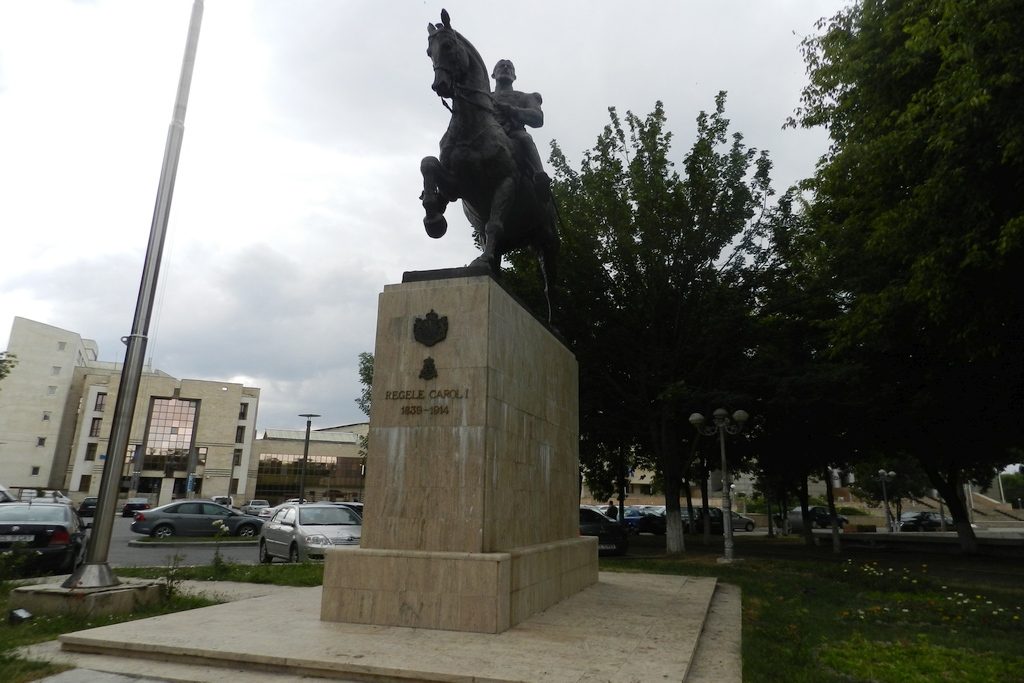

Situated in May 2008 near the gymnasium which has its name in Călărași. At the unveiling, there were present dozens of personalities among whom His Eminence the Archbishop of Slobozia and Călărași and King Mihai, who was commissioned together with the mayor Nicolae Dragu with the unveiling of the statue. The statue of King Carol I of Romania is the first equestrian statue of a member of the royal house unveiled after 1989. It was made by sculptor Florin Codre.
Carol I of Romania, Principe of Hohenzollern – Sigmaringen, (born on the 20th of April 1829, Sigmaringen – deceased at the 10th of October 1914, Sinaia) was the prince, then the king of Romania, who ruled the Romanian Princedoms and then of Romania after the forced abdication by a coup d’etat of Alexandru Ioan Cuza. Starting with 1867 became a member of honor of the Romanian Academy, and between 1879 and 1914 he was the protector and the president of honor of the same institution.
In the 48 years of his reign (the longest reign in the history of the Romanian states), Carol I has obtained the country’s independence, thanks to which his prestige has increased significantly, he redressed the economy, he equipped Romania with a series of institutions specific to the modern states and he set the basis for a dynasty. He built in the Carpathian Mountains the Peleș castle, which remained until present one of the most visited tourist attractions of the country. After the Russian – Turkish war (1877 – 1878), Romania gained Dobrogea (but lost the southern part of Basarabia), and Carol disposed the building up of the bridge over the Danube, betweeen Fetești and Cernavodă, which will connect the new province with the rest of the country.
The most important non-achievement of the reign of the king Carol I, as well as of his successors in the monarchy period of the country’s modern history, was the failure of the settlement of the typical problems of a country whose economy was based upon agriculture and whose population was represented in an overwhelming majority by peasants. After the enthronement of Carol I, the situation of the Romanian peasantry starts to degrade seriously, as the landowners, in order to cope with competition on the external markets, continuously raises the exploitation level of the peasantry. The unfair system for the overwhelming majority of the Romanian population from that period was additionally almost an exception in the region, fact which still didn’t stimulate the sovereign to initiate a program of agrarian reform, situation which led to repetitive social explosions in the rural environment at the end of the XIXth century and at the beginning of the XXth century. The result was the fact that the fundamental sector of the Romanian economy in the era, in which the overwhelming majority of the population was driven, remained in a primitive state.
